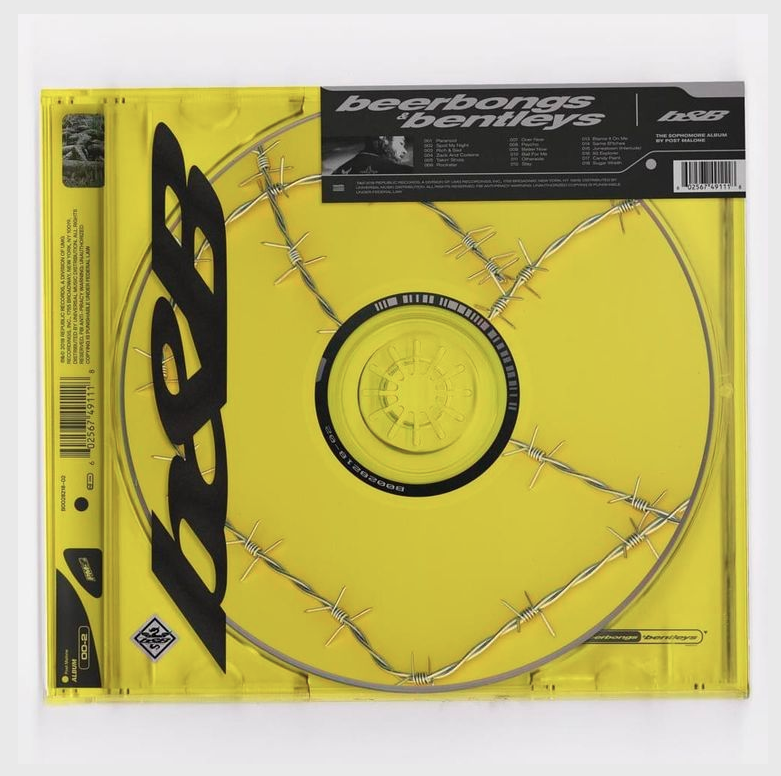From the court in Salt Lake City to Universal Music Group’s Santa Monica offices, the phrase “Post Malone” is a proven recipe for success.
Karl Malone, the Hall of Fame power forward who played for the Jazz from 1985 to 2003, scored the second-most points in the history of the NBA largely due to those two words, which now double as the moniker of one of today’s perennially chartable artists.
In basketball, a “post-up” is a move in which a player — usually with a size advantage — positions themselves in the “post” area close to the basket with their back pressing up against the defender. If former Utah Jazz coach Jerry Sloan screamed “Post Malone! Post Malone!” from the bench, Malone would get his 6-foot-9, 258-pound frame into the aforementioned position, wait for a pass from superstar point guard and quasi-magician John Stockton and score with demoralizing ease.
Since his “White Iverson” arrival, the now-22-year-old Post Malone has played the part of alchemist, converting hooks and features into platinum and gold records with the ease of a layup. On Beerbongs & Bentleys, the multifaceted artist’s second studio album whose title sounds like a long-lost Kid Rock and Lloyd Banks collaborative project, Malone eschews risk and stays understandably super-glued to his propitious formula.
A master of catchiness, Malone gamed today’s market and filled Beerbongs & Bentleys with 18 tracks and 64 minutes of chartability marked by massively performing singles like “Rockstar,” “Candy Paint” and “Psycho.” On the latter, Malone — whose musical stylings lay somewhere between Toby Keith and featured artist Ty Dolla $ign — is frustratingly good.
“My roof look like a no-show, got diamonds by the boatload” sings the Dallas-bred Malone. “Come with the Tony Romo for clowns and all the bozos.”
The hook of “Psycho” represents the conundrum that is Post Malone’s music, an objectively enjoyable sound that emanates from an inherently questionable source. The ability to appreciate Malone is directly tied to a person’s ability to suspend their disbelief. And for those who can get past the fact that the man orating tales of 9mm guns and jewelry looks like Willie Nelson if he grew up in the SoundCloud era, there’s the dazzling “Stay.”
“Tell me that it’s all okay/ I’ve been waitin’ on this all damn day,” croons Malone over the guitar with palpable pain. “Call me in the mornin’, tell me how last night went/ I’m here, but don’t count on me to stay.”
“Stay” is Malone’s gorgeous and haunting tale of vulnerability, the words of an artist who hopes to not be the next member of the 27 Club but understands the likelihood. The slowed-down ballad marks a departure from Malone’s recipe of smooth bragging and flaunting that otherwise causes the 18-track album to sound repetitive.
The issue created by Malone’s sticking to what works can be described no better than by rapper, producer and friend of mine Nick Myers.
Post Malone think he slick , 18 songs my ass this album is one hour long track ????????♂️
— NiCK (@FreeMeMyers) April 27, 2018
Like it or not, the various record-breaking debut of Malone’s latest album positions the artist as a titan of the Hip-Pop industry. And yes, that is a beer bong in the backseat of his Bentley.




